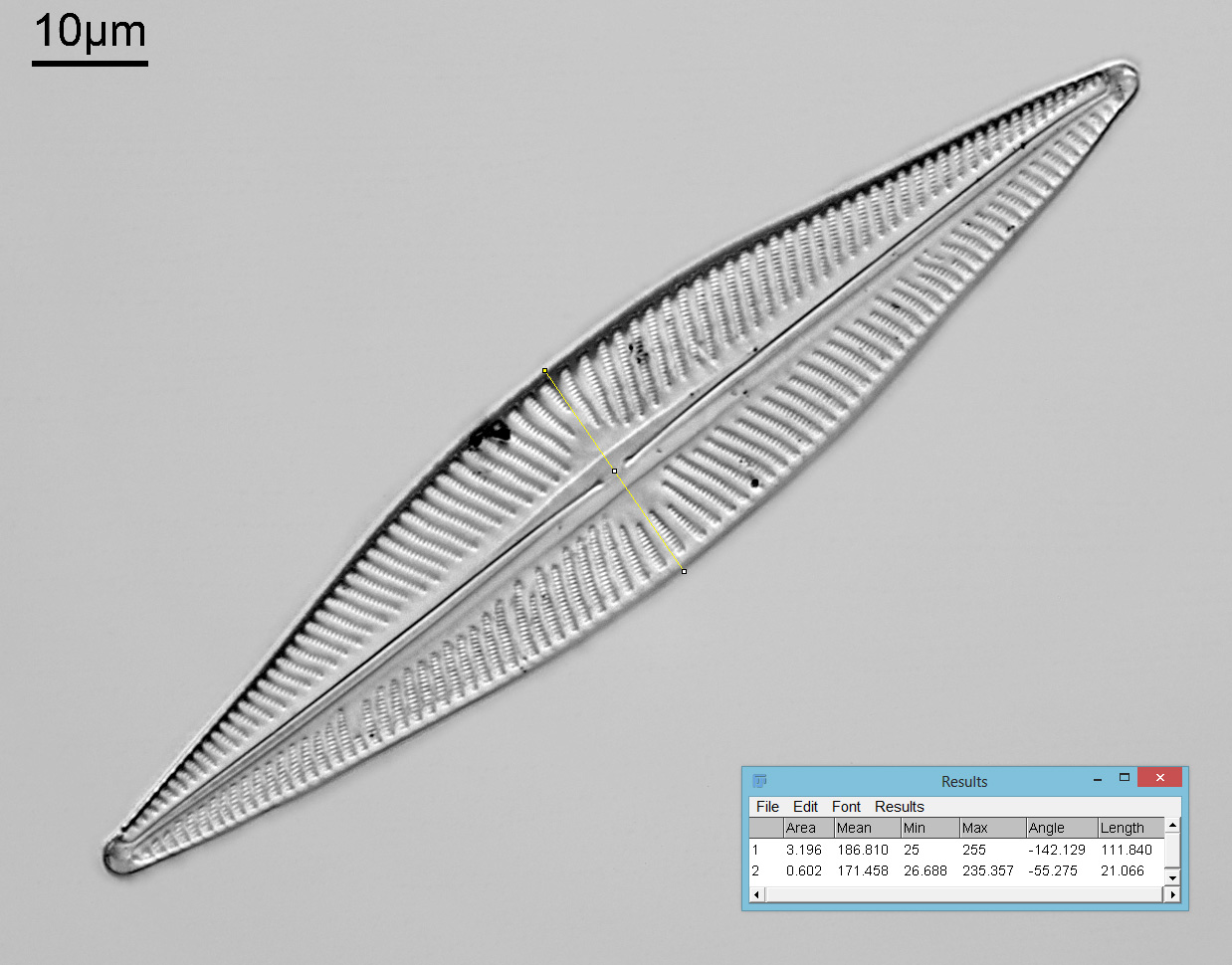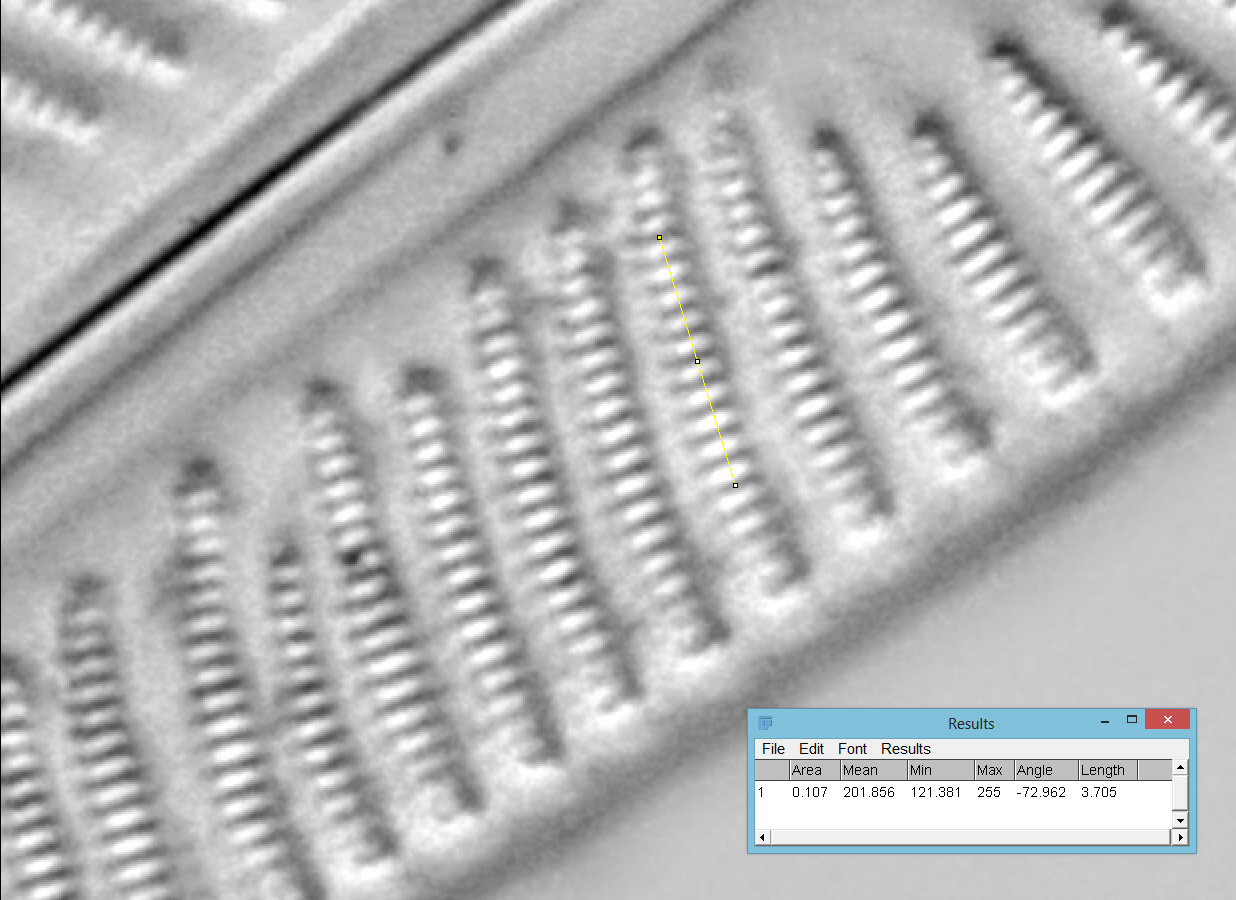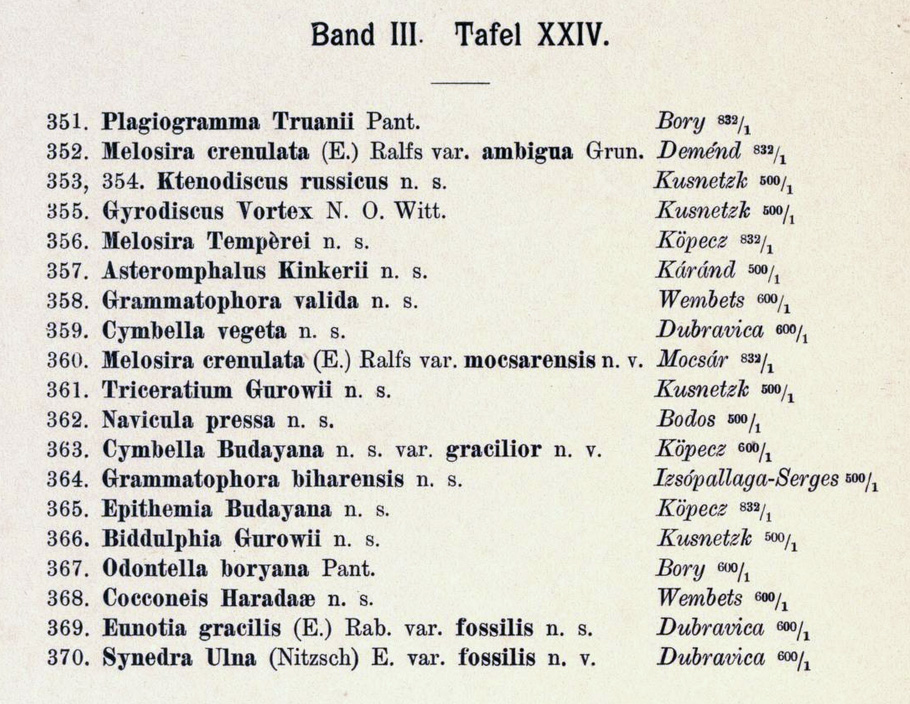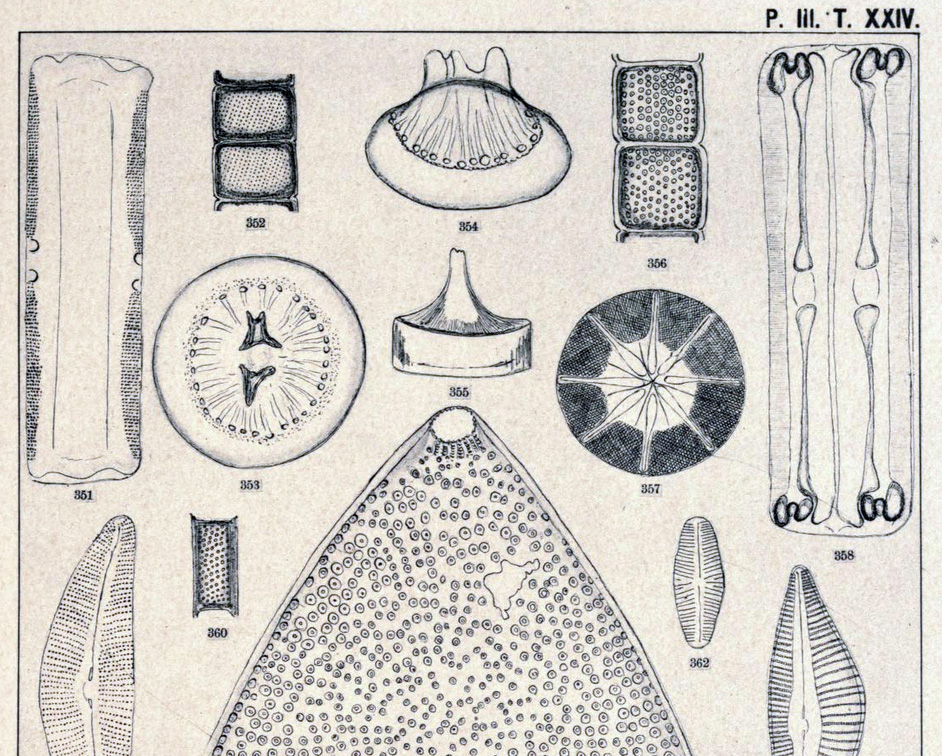





A slide labelled as Navicula pressa (I don’t think this is right, but more on that in a minute), from Bodos, Hungary (now Bodoș, Transylvania). Single example on the slide. Mounted in Styrax. No makers name but this is a slide by JA Long based on the style and hand writing. Olympus BHB microscope using 450nm LED light. 63x Leitz Pl Apo 1.4 objective, oil immersion. Olympus Aplanat Achromat condenser, oil immersion, oblique lighting. 2.5x Nikon CF PL photoeyepiece. Monochrome converted Nikon d850 camera. 46 images stacked in Zerene (Pmax).
Back to the name. Navicula pressa is described in Pantocsek, J. (1892). Beiträge zur Kenntnis der Fossilen Bacillarien Ungarns. 3 Teile. Julius Platzko, Nagyy-Tapolcsany. Teil III, Susswasser Bacillarien. Anhang-analysen 15 neuer Depots von bulgarien, Japan, Mahern, Russland und Ungarn. Nagy-Tapolcsány, Buchdrucherei von Julius Platzko, 42 pls., available online here : plate 24, figure 362. Google translate of that says;
“349. Navicula pressa Pant. nov. spec.
Elliptic-lanceolate (?), with obtuse poles. Length 40.5µm, width 15µm. Raphe directa (?). Central area transversely dilated. Striae 8-9 in 10µm radiating, smaller towards the valve center.
In fresh water tertiary strata at Bodos in Transylvania.
Icon: Beitrg. III, tab. 24., fig. 362.”
While Google translate struggled with some of this, it does say the length was 40.5µm and the width 15µm. This is very different to the example on the slide, whose length was 121µm and width was 21µm. Also the image in Pantocsek is not a good match for the one on the slide (figure 362, plate 24).
Looking further for Navicula diatoms from that region, I found Levkov, Z., Edlund, M.B. & Nakov, T. (2008). Identity and typification of Navicula hasta (Bacillariophyceae). Phycological Research 56(1): 46-57. In this is described what they were calling Navicula krenneri (a new name for one that was previously thought part of Navicula hasta), and it has the following information for it;
“Valves lanceolate to narrowly lanceolate, ends gradually narrowing. Valve length 100–130µm, breadth 20–22µm. The raphe is distinctly lateral accompanied by a strongly contoured sternum. Proximal raphe ends large, clearly expanded. The axial area is linear tapering to the ends. The central area is small, transapically irregularly widened. The stria are radiate throughout and shortened in irregular fashion in the central area, 7–9 in 10µm. Lineolae discernible with light microscopy, 27–28 in 10µm.”
The one on this slide matches the length, width (breadth) and lineolae spacing (371nm is 27 per 10µm), and the overall appearance of the example they give are very similar to the one on this slide. I think therefore that rather than Navicula pressa as written on the slide, this is likely to be an example of Navicula krenneri.